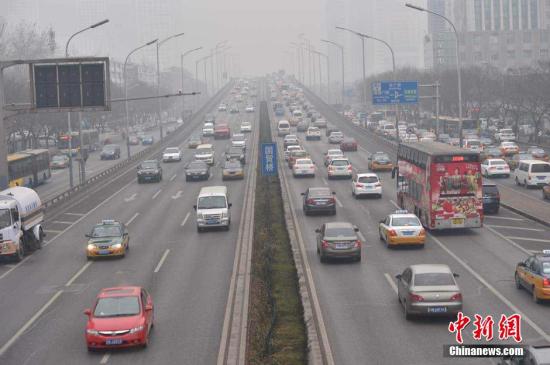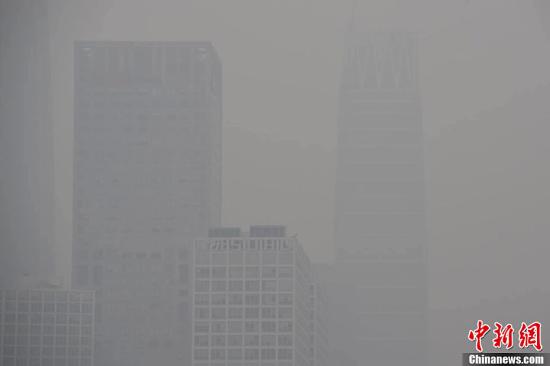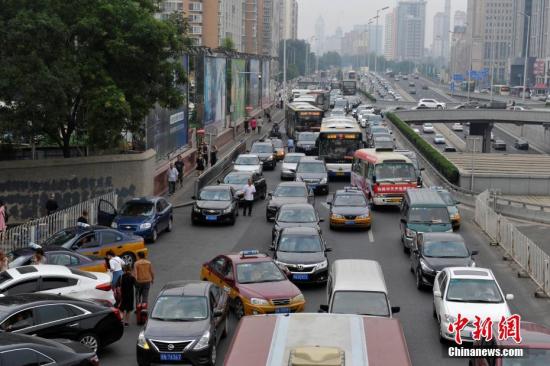From February 15th next year in Beijing, vehicles in China I and II will be restricted within the Fifth Ring Road on weekdays.

BEIJING, Nov. 21 (Xinhua) According to the official website of Beijing Environmental Protection Bureau, the latest revised Emergency Plan for Heavy Air Pollution in Beijing was released today and will be implemented from December 15, 2016. After that, when the orange and red air pollution were warned, light gasoline vehicles with national I and II emission standards were banned in the whole city.
At the same time, the road working day restriction policy within the Fifth Ring Road (excluding) of China I II emission standard light gasoline vehicles was released, and the government subsidy policy for scrapping China I II light gasoline vehicles in advance and the preferential loan products for related banks were introduced. This restriction policy will be implemented on February 15, 2017.

On November 18th, the first orange smog warning issued this winter in Beijing due to poor diffusion conditions of pollutants will continue. The picture shows the high-rise buildings in Beijing International Trade CBD looming. Zhongxin.com reporter Jin Shuo photo
The revised Emergency Plan for Heavy Air Pollution in Beijing will be implemented from December 15th, 2016.
In 2012, Beijing issued and implemented the emergency plan for heavy air pollution for the first time, and revised the emergency plan according to the problems reflected in the implementation. Mainly in four aspects:
The first is to unify the early warning grading standards.According to the requirements of the Ministry of Environmental Protection, Beijing-Tianjin-Hebei unified the early warning grading standards, taking into account the factors of high concentration of pollutants in a single day. The starting conditions of the early warning are as follows: the blue early warning is to predict that there will be one day of heavy pollution in the future; Yellow indicates that severe pollution is predicted for two consecutive days or more; Orange is the forecast of serious pollution for three consecutive days, of which one day will reach serious pollution; The red warning is to predict serious pollution for 4 consecutive days or more, of which 2 days will reach serious pollution; Or when the single-day air quality index (AQI) reaches 500, a red warning should also be started.
Second, the vehicle pollution reduction efforts have been strengthened.In accordance with the principle of giving priority to the reduction of highly polluting vehicles, when the orange warning is issued, emergency measures will be taken to ban gasoline vehicles and construction waste, muck and gravel transport vehicles with national I and II emission standards in the city; The red warning is based on the orange warning, and other vehicles in the city are driving with single and even numbers (except pure electric vehicles).
The third is to adopt differentiated emergency measures.Considering the regional air quality differences, school teaching conditions, and many factors such as parental care and teaching arrangements involved in student suspension, the unified suspension measures will be adjusted to the protective measures of flexible teaching or suspension by the municipal and district education authorities according to the actual situation of the territory.
The fourth is to refine the measures to stop production and shutdown according to local conditions.With the goal of pollution reduction, according to the idea of "positive list and negative process", the emergency measures of industrial enterprises will be more refined and targeted. Refine the overall production stoppage of enterprises in the catalogue of production stoppage to the production stoppage of processes with air pollution discharge, and other non-polluting processes can be produced normally; Make a list of enterprises and construction projects to ensure the normal operation of the city, and produce in an orderly manner on the premise of meeting the discharge standards during early warning, so as to minimize the impact of early warning of heavy pollution on social production and life.

The working day restriction policy in the Fifth Ring Road of China I and II light gasoline vehicles will be implemented from February 15, 2017.
From February 15, 2017, Beijing will implement the road working day restriction within the Fifth Ring Road (excluding) for light gasoline vehicles with national I and II emission standards in this city and other places. For motor vehicles that violate the regulations and drive on roads in restricted areas, the traffic administrative department of the public security shall, in accordance with relevant laws and regulations, impose a fine on 100 yuan, which shall be calculated and punished once every 4 hours.
In addition, when the old and new policies cross, government subsidies will be high or low. In order to encourage car owners to replace and eliminate old cars with high pollution emissions, the government has introduced a subsidy policy to encourage the elimination, and at the same time guided banks to launch preferential loan products for car purchase. Beijing’s current "Renewal Plan for Further Promoting the Elimination of Old Motor Vehicles (2015-2016)" will expire at the end of 2016. In order to encourage car owners to get rid of old cars as soon as possible, this time, the "Beijing Plan for Promoting the Elimination and Renewal of Old Motor Vehicles with High Emission Pollution" was launched. From December 1, 2016 to the end of 2017, light gasoline vehicles with emission standards of country I and country II will be scrapped. Government subsidies can be obtained.
Among them, the elimination before the end of June 2017 is 2000 yuan more than the elimination from July to the end of December 2017. Car owners can apply for government subsidies through the third-party trading platform "Beijing Environment Exchange". In addition, Beijing has organized and guided commercial banks to provide preferential loan products for car owners who have eliminated light gasoline vehicles with national I and II emission standards, and will start processing them on December 1, 2016.
Extended reading:
"Four steps" to distinguish whether the vehicle is a country I or a country II vehicle.
First of all, "counting time" can be distinguished according to the vehicle registration date marked on your driving book. Cars bought after June 30, 2006 in this city are not national I and II cars.
The second is "counting the stars", which means looking at the environmental protection signs issued by the annual inspection of motor vehicles. If there is no green sign of a star, a star or two stars, it is a country I and a country II car.
The third is "looking at materials", according to the vehicle emission standards marked by materials such as the vehicle factory certificate issued by the automobile manufacturer when buying a new car.
Fourth, "seeking help", you can log on to the "Motor Vehicle Emission Standard Inquiry" column of the website of Beijing Environmental Protection Bureau; Or directly call the "12369" Beijing environmental complaint reporting consultation telephone, and ask the staff to help you directly inquire.